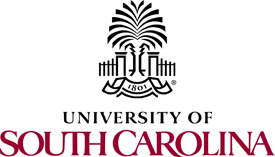CAA News Today
Provenance Research in American Institutions
posted by Linda Downs — August 28, 2014
Rowman & Littlefield is pleased to announce the release of Volume 10, Number 3 of Collections: A Journal for Museum and Archives Professionals, a focused issue dedicated to the subject of provenance research in American institutions. Guest-Edited by Jane C. Milosch, Lynn H. Nicholas, and Megan M. Fontanella, the issue draws attention to current research in the field by highlighting key resources and initiatives, case studies from collections throughout the United States, and perspectives on unprovenanced cultural property and Nazi-era claims.
\Bringing together the expertise of independent scholars and professionals who are affiliated with American institutions, this issue aims to foster dialogue among museums, archives, and research centers and to broaden the accessibility of information. The collection of articles opens with a Foreword by Megan M. Fontanella and an introduction by Lynn H. Nicholas. A closer look at resources and initiatives is offered in the following articles: “Provenance: Not the Problem (The Solution): Smithsonian Provenance Research Initiative” by Jane C. Milosch; “Princes, Dukes, and Counts: Pedigrees and Problems in the Kress Collection” by Nancy H. Yeide; “The ‘German Sales 1930–1945’ Database Project” by Christian Huemer; and Laurie A. Stein’s “’Everyone Brings a Piece to the Puzzle’: Conversations with Elaine Rosenberg and Reflections on Provenance Research among The Paul Rosenberg Archives.” Case studies include: “Navigating the Gray Area: Pechstein’s Girl Combing Her Hair, the Littmann Collection, and the Limits of Evidence” by Catherine Herbert; “Researching the Wertheim Collection at the Harvard Art Museums” by Elizabeth M. Rudy; “One Painting Concealed Behind Another: Picasso’s La Douleur (1903) and Guitar, Gas-Jet, and Bottle (1913)” by Christel Hollevoet-Force; “The Eugene Garbáty Collection of European Art” by Victoria Reed; and Dorota Chudzicka’s “’In Love at First Sight Completely, Hopelessly, and Forever with Chinese Art’: The Eugene and Agnes Meyer Collection of Chinese Art at the Freer Gallery of Art.” Perspectives on legal claims include Gary Vikan’s “Provenance Research and Unprovenanced Cultural Property” and Stephen W. Clark’s “Nazi-Era Claims and Art Museums: The American Perspective”.
This impressive group of articles is valuable to art historians, curators, and myriad others whose work addresses provenance. The collection showcases thoughtful, methodical and meticulous research related to individual owners and to individual works and collections of art. It serves as a touchstone for provenance research in American Institutions. Journal Editor Juilee Decker stated, “It is particularly exciting to see this issue of Collections appear in print. This focused issue takes the lead in proactive press regarding the continuous efforts of provenance research at American institutions. Building on the recent interest surrounding ‘The Monuments Men,’ this journal forms part of the epilogue to an unfinished story of provenance that both pre- and post-dates the Second World War, providing insight into the challenging, exciting and ongoing work of provenance researchers that continues to be integral to museums worldwide.”
“The value of this focused issue on provenance research in American institutions,” remarks guest editor and Director of the Smithsonian Provenance Research Initiative Jane C. Milosch, is that it “brings together scholars and researchers to share their incredible work and to initiate important discussions for the future. While the greatest focus and challenge of provenance research remains sifting through immense amounts of paper and digital archival materials, communication and collaboration are essential to effective provenance research and to sharing with and educating others on how specialized and time-consuming provenance research is with its often inconclusive results and on-going nature.”
Published by AltaMira Press (an imprint of Roman & Littlefield), Collections: A Journal for Museum and Archives Professionals is a multidisciplinary journal for all aspects of handling, preserving, researching, interpreting, and organizing collections. To purchase Volume 10, Number 3 (Summer 2014) focusing on “Provenance Research in American Institutions” call 1.800.273.2223 or send an email to: journals@rowman.com with “Issue 10.03” in the subject line. Further information about the journal may be obtained online: https://rowman.com/Page/Journals.
News from the Art and Academic Worlds
posted by Christopher Howard — August 27, 2014
Each week CAA News publishes summaries of eight articles, published around the web, that CAA members may find interesting and useful in their professional and creative lives.
From the Archives: The First Week of the Academic Term
The ProfHacker archives are full of useful ideas, tools, and advice relevant to the first week of a new academic semester or quarter. In addition to the posts highlighted below, you may want to check out some previous From the archives posts on New Semester, New Year, Creating Syllabi, and Grading. (Read more from ProfHacker.)
Sabbatical Planning
A sabbatical was finally mine, but now what? I read as much as I could find, and contacted colleagues who had recently ended their sabbaticals for advice. Their accumulated advice roughly fell into the familiar set of questions, albeit in a different order: the Why, What, Who, Where, How and When of sabbatical. (Read more from Inside Higher Ed.)
Ethics for Dealers: Deaccessioning
If someone helps another person commit a crime, he’s an accessory to the illegal act and probably guilty of an infraction. What about an ethical violation? The question is becoming increasingly relevant in the art world as the Delaware Art Museum deaccessions works of art to pay off its debt and, as first conceived, built up its endowment. (Read more from Art Antiques Design.)
Getty Thesaurus of Geographic Names Released as Linked Open Data
The Getty Thesaurus of Geographic Names is a resource of over 2 million names of current and historical places, including cities, archaeological sites, nations, and physical features. It focuses mainly on places relevant to art, architecture, archaeology, art conservation, and related fields. (Read more from Getty Iris.)
The Free and Antifree
For a young writer who hopes to produce literature, the greatest difference between now and twenty years ago may be that now she expects to get paid. Twenty years ago, art and commerce appeared to be opposing forces. The more you were paid for your work, the more likely you were to be a hack. (Read more from N+1.)
More Hospitals Use the Healing Powers of Art
Researchers are learning more about the precise ways paintings and other works of art help patients and families in the healing process. With studies showing a direct link between the content of images and the brain’s reaction to pain, stress, and anxiety, hospitals are considering and choosing artworks based on the evidence and giving it a higher priority than merely decoration for sterile rooms and corridors. (Read more from the Wall Street Journal.)
I Used to Be a Good Teacher
I spent five years on the tenure track. Now I’m an adjunct, and the move has affected my teaching in ways I didn’t anticipate. I’m not the teacher I once was, largely thanks to the lack of support I receive as an adjunct. Sadly, my students suffer the loss. (Read more from Vitae.)
The Invention of the “Snapshot” Changed the Way We Viewed the World
The age of everyday camera drones has arrived—bringing strange new forms of photography—and they’re causing new privacy panics. How will society change when anyone can spy from above? We can find some clues by looking at the last great shift in photography: the rise of the personal camera and the birth of the “snapshot.” It was a moment that changed the way we recorded the world. (Read more from Smithsonian Magazine.)
Mentors Needed for the 2015 Annual Conference
posted by Lauren Stark — August 26, 2014
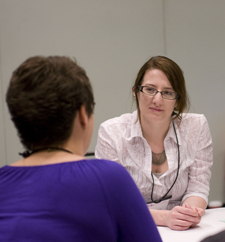 For the 103rd Annual Conference, taking place February 11–14, 2015, in New York, CAA seeks established professionals in the visual arts to volunteer as mentors for two Career Services programs: the Artists’ Portfolio Review and Career Development Mentoring. Participating as a mentor is an excellent way to serve the field and to assist the professional growth of the next generation of artists and scholars.
For the 103rd Annual Conference, taking place February 11–14, 2015, in New York, CAA seeks established professionals in the visual arts to volunteer as mentors for two Career Services programs: the Artists’ Portfolio Review and Career Development Mentoring. Participating as a mentor is an excellent way to serve the field and to assist the professional growth of the next generation of artists and scholars.
Art historians and studio artists must be tenured; critics, museum educators, and curators must have five years’ experience. Curators and educators must be currently employed by a museum or university gallery.
Artists’ Portfolio Review
CAA seeks artists, critics, curators, and educators to serve in the Artists’ Portfolio Review. In this program, mentors review and provide feedback on digital images or DVDs of work by artist members in personal twenty-minute consultations. Whenever possible, CAA matches artists and mentors based on medium or discipline. Mentors provide an important service to artists, enabling them to receive professional criticism of their work.
Interested candidates must be current CAA members and prepared to give five successive twenty-minute critiques in a two-hour period on one of the two days of the review: Thursday, February 12, and Friday, February 13, 2015, 8:00 AM–NOON and 1:00–5:00 PM each day. Conference registration, while encouraged, is not required to be a mentor. Please send a brief letter of interest and your CV to Lauren Stark, CAA manager of programs. Deadline extended: January 9, 2015.
Career Development Mentoring
CAA seeks mentors from all areas of studio art, art history, art education, film and video, graphic design, the museum professions, and other related fields to serve in Career Development Mentoring. In this program, mentors give valuable advice to emerging and midcareer professionals, reviewing cover letters, CVs, digital images, and other pertinent job-search materials in personal twenty-minute consultations. Whenever possible, CAA matches participants and mentors based on medium or discipline.
Interested candidates must be current CAA members and prepared to give five successive twenty-minute critiques in a two-hour period on one of the two days of the review: Thursday, February 12, and Friday, February 13, 2015, 8:00 AM–NOON and 1:00–5:00 PM each day. Conference registration, while encouraged, is not required to be a mentor. Please send a brief letter of interest and your CV to Lauren Stark, CAA manager of programs. Deadline extended: January 9, 2015.
Career Development Mentoring is not intended as a screening process by institutions seeking new hires. CAA does not accept applications from individuals whose departments are conducting a faculty search in the field in which they are mentoring. Mentors should not be attending the conference as candidates for positions in the same field in which mentees may be applying.
Image: A mentoring session at the 2012 Annual Conference in Los Angeles (photograph by Bradley Marks)
Projectionists and Room Monitors for the 2015 Annual Conference
posted by Lauren Stark — August 25, 2014
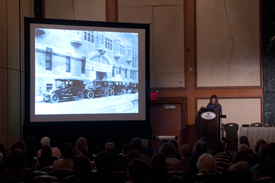 CAA has filled all the positions for room monitors but is still seeking projectionists.
CAA has filled all the positions for room monitors but is still seeking projectionists.
Working as a projectionist or room monitor at CAA’s 103rd Annual Conference, taking place February 11–14, 2015, in New York, is a great way to save on conference expenses. All candidates must be US citizens or permanent US residents. CAA encourages students and emerging professionals—especially those in the New York area—to apply for service.
Projectionists
CAA seeks applications for projectionists for conference program sessions. Successful applicants are paid $12 per hour and receive complimentary conference registration. Projectionists are required to work a minimum of four 2½-hour program sessions, from Wednesday, February 11 to Saturday, February 14; they must also attend a training meeting on Wednesday morning at 7:30 AM. Projectionists must be familiar with digital projectors. Please send a brief letter of interest to Lauren Stark, CAA manager of programs and archivist. Deadline extended: December 1, 2014.
Room Monitors
CAA needs room monitors for two Career Services mentoring programs (the Artists’ Portfolio Review and Career Development Mentoring), several offsite sessions, and other conference events, to be held from Wednesday, February 11 to Saturday, February 14; they must also attend a training meeting on Thursday morning at 7:30 AM. Successful candidates are paid $12 per hour and receive complimentary conference registration. Room monitors are required to work a minimum of eight hours, checking in participants and facilitating the work of the mentors. Please send a brief letter of interest to Lauren Stark, CAA manager of programs and archivist. No more room monitors are needed.
Image: A 2013 Annual Conference session (photograph by Bradley Marks)
Solo Exhibitions by Artist Members
posted by CAA — August 22, 2014
See when and where CAA members are exhibiting their art, and view images of their work.
Solo Exhibitions by Artist Members is published every two months: in February, April, June, August, October, and December. To learn more about submitting a listing, please follow the instructions on the main Member News page.
August 2014
Mid-Atlantic
Mark Tribe. Corcoran Gallery of Art, Washington, DC, July 19–September 28, 2014. Mark Tribe: Plein Air. Digital photography.
South
Kyra Belán, Art Gallery, Broadway Palm Dinner Theatre, Fort Meyers, Florida, May 27–June 22, 2014. Acrylic and oil painting.
West
Deborah Cornell. Los Angeles Center for Digital Art, Los Angeles, California, July 10–August 30, 2014. In the Space We Left Vacant. Digital prints and video.
Participate in ARTexchange
posted by Lauren Stark — August 21, 2014
 ARTexchange for the 2015 Annual Conference in New York is now full.
ARTexchange for the 2015 Annual Conference in New York is now full.
The Services to Artists Committee invites artist members to participate in ARTexchange, the annual meet-up for artists and curators at CAA’s unique pop-up exhibition. This social event provides an opportunity for artists to share their work and build affinities with other artists, historians, curators, and cultural producers. ARTexchange will take place at the 103rd Annual Conference on Friday evening, February 13, 2015, from 5:30 to 7:30 PM. This event is free and open to the public.
Each artist is given the space on, above, and beneath a six-foot table to exhibit their works: prints, paintings, drawings, photographs, sculptures, and small installations; performance, process-based, interactive and participatory works are especially encouraged. Previous ARTexchange participants have found that this parameter sparked many creative display options. Depending on the number and type of submissions CAA receives, a schedule of performances may be created. Please note that artwork cannot be hung on walls, and it is not possible to run power cords from laptops or other electronic devices to outlets—bring fully charged batteries.
To participate, send an email to Lauren Stark, CAA manager of programs. Include your CAA member number and a brief description of what you plan to present. Please provide details regarding performance, sound, spoken word, or technology-based work, including laptop presentations. You will receive an email confirmation. Because ARTexchange is a popular venue and participation is based on available space, early applicants are given preference. Participants are responsible for their work; CAA is not liable for losses or damages. Sales of work are not permitted. Deadline extended: January 9, 2015.
Image: Hannah Skoonberg participated in ARTexchange at the 2014 Annual Conference in Chicago (photograph by Bradley Marks)
News from the Art and Academic Worlds
posted by Christopher Howard — August 20, 2014
Each week CAA News publishes summaries of eight articles, published around the web, that CAA members may find interesting and useful in their professional and creative lives.
Almanac of Higher Education 2014
The Chronicle’s twenty-seventh annual collection of data on colleges answers perennial questions like how much faculty make and which colleges are growing the fastest. This year’s almanac also gives you new ways to compare institutions. Which colleges have the most students enrolled in online courses? Which have the highest percentages of nonresident aliens? Browse the charts and tables in these sections to find out. (Read more from the Chronicle of Higher Education.)
Starting Over, Part 1
First, congratulations. You got a job, which isn’t easy to do these days. I know you’re probably very stressed out right now. I’ve felt that way four times. I have written elsewhere of my academic employment history, but suffice it to say, yes: four tenure-track jobs, four cross-country moves, four universities, four times I’ve started from scratch. So, here’s my hard-earned advice about adjusting to a new place, managing your expectations, and getting what you really want. (Read more from Inside Higher Ed.)
Starting Over, Part 2
In the first part of this essay on tips for professors on starting over at a new college, I offered advice on seeking mentors, changing your thinking from your grad school days, and “thinking like a lawyer.” Here’s my second batch of hard-earned advice (from my multiple job changes) about adjusting to a new place, managing your expectations, and getting what you really want. (Read more from Inside Higher Ed.)
How to Write an Honest but Collegial Book Review
I have agreed to write a book review, and I’m frankly not sure how to proceed. My advisor, who invited me to write it, is not a fan of this particular author and will expect a critical review. But the author, as someone who works in my area, is a possible contact/future colleague, and I don’t want to alienate him by writing a scathing review. Is there some formula to follow for writing book reviews? Do you have any tips for writing a critical review that doesn’t shred the book? (Read more from Vitae.)
Beyond the Relic Cult of Art
I am nostalgic for a time before the modern concept of art forgery had gelled, when it was possible to imagine many ways for artworks to exist out of their time. I love the culture of Renaissance art because it was not settled in its categories, and produced art out of that unsettlement. It knew forgery, but it wrinkled time in other ways as well. (Read more from the Brooklyn Rail.)
Digitizing Warhol’s Film Trove to Save It
Andy Warhol wrote lovingly of his ever-present tape recorder. But for almost a decade beginning in the 1960s, his real boon companions seemed to be his 16mm film cameras, which he used to record hundreds of reels, many of which are still little known even among scholars because of the fragility of the film and the scarcity of projectors to show them on. Now the Warhol Museum and the Museum of Modern Art, which holds the artist’s film archives, are beginning a project to digitize the materials. (Read more from the New York Times.)
Rethinking My Cell Phone/Computer Policy
My banning of cell phones and laptops, particularly the way I articulate it as a “ban” in my policies, suddenly seemed inconsistent with my own philosophies. And yet, I still don’t want students habitually using their phones or computers in class, unless we are in the midst of an activity—such as database research—that is obviously facilitated by their computers. (Read more from Inside Higher Ed.)
Camera Phones Stoke Fears That Technology Is Leaving Us Incapable of Deep Engagement with Anything
How long do you need to look at a painting to really appreciate it? There are many answers to this question. As long as you like, is one. Longer than you think, is another. The art historian James Elkins wrote that it took him about 100 hours, over three years, to learn to really see a Mondrian painting. He recounts meeting a woman who had spent an hour looking at the same Rembrandt work four times a week for at least two decades—or about 3,000 hours. (Read more from the Independent.)
Exhibitor and Advertiser Prospectus for the 2015 Annual Conference
posted by CAA — August 18, 2014
 The Exhibitor and Advertiser Prospectus for the 2015 Annual Conference in New York is now available for download. Featuring essential details for participation in the Book and Trade Fair, the booklet also contains options for sponsorship opportunities and advertisements in conference publications and on the conference website.
The Exhibitor and Advertiser Prospectus for the 2015 Annual Conference in New York is now available for download. Featuring essential details for participation in the Book and Trade Fair, the booklet also contains options for sponsorship opportunities and advertisements in conference publications and on the conference website.
The Exhibitor and Advertiser Prospectus will help you reach a core audience of artists, art historians, educators, students, and administrators, who will converge in New York for CAA’s 103rd Annual Conference, taking place February 11–14, 2015. With three days of exhibit time, the Book and Trade Fair will be centrally located at the Hilton New York, where all programs sessions and special events take place. CAA offers several options for booths and tables that can help you to connect with conference attendees in person. The priority deadline for Book and Trade Fair applications is Friday, October 31, 2014; the final deadline for all applications and full payments is Monday, December 8, 2014.
In addition, sponsorship packages will allow you to maintain a high profile throughout the conference. Companies, organizations, and publishers may choose one of four visibility packages, sponsor specific areas and events such as the Student and Emerging Professionals Lounge, or work with CAA staff to design a custom package. Advertising possibilities include the Conference Program, distributed to over five thousand registrants in the conference tote bag, and the conference website, seen by thousands more. The Conference Information and Registration booklet is digital-only for the first time and a great opportunity to feature color ads that link directly to your website. Web ads are taken on a rolling basis, but the deadline for inclusion in the Conference Information and Registration booklet is Friday, August 29, 2014. The deadline for sponsorships and advertisements in the Conference Program is Friday, December 5, 2014.
Questions about the 2015 Book and Trade Fair? Please contact Paul Skiff, CAA assistant director for Annual Conference, at 212-392-4412. For sponsorship and advertising queries, speak to Hillary Bliss, CAA development and marketing manager, at 212-392-4436.
People in the News
posted by CAA — August 17, 2014
People in the News lists new hires, positions, and promotions in three sections: Academe, Museums and Galleries, and Organizations and Publications.
The section is published every two months: in February, April, June, August, October, and December. To learn more about submitting a listing, please follow the instructions on the main Member News page.
August 2014
Academe
Wayne “Mick” Charney, associate professor of architecture at Kansas State University in Manhattan, has been designated the 2014–2015 Coffman Chair for University Distinguished Teaching Scholars.
R. Luke DuBois, assistant professor of integrated digital media for New York University’s Polytechnic School of Engineering and director of the Brooklyn Experimental Media Center, has earned tenure at his school.
Allison Leigh has accepted a 2014–15 postdoctoral fellowship in art history in the Faculty of Humanities and Social Sciences at the Cooper Union for the Advancement of Science and Art in New York.
Michele Matteini, assistant professor of East Asian art, architecture, and visual culture, has been appointed to a joint appointment at New York University’s Institute of Fine Arts and Department of Art History.
Robert A. Maxwell, associate professor at the University of Pennsylvania in Philadelphia, has joined the faculty of the Institute of Fine Arts at New York University.
Lisa M. Strong, previously manager of curatorial affairs at the Corcoran Gallery of Art in Washington, DC, has been appointed director of the MA program in art and museum studies and associate professor of the practice at Georgetown University, also in Washington, DC.
Museums and Galleries
Jill Deupi, director and chief curator of University Museums at Fairfield University in Fairfield, Connecticut, has been appointed director of the Lowe Art Museum at the University of Miami in Florida.
Barbara Buhler Lynes, founding curator of the Georgia O’Keeffe Museum in Santa Fe, New Mexico, has become Sunny Kaufman Senior Curator for Nova Southeastern University’s Museum of Art in Fort Lauderdale, Florida.
Vanja Malloy, formerly Chester Dale Fellow in the Department of Modern and Contemporary Art at the Metropolitan Museum of Art in New York, has been named curator of American art at Amherst College’s Mead Art Museum in Amherst, Massachusetts.
Alia Nour, associate curator for the Dahesh Museum of Art in New York, has been promoted to full curator at her institution.
Mary Reid, director and curator of the School of Art Gallery at the University of Manitoba in Winnipeg, has accepted a position as director and curator of the Woodstock Art Gallery in Woodstock, Ontario.
Organizations and Publications
Laura Beach, formerly deputy editor of The Magazine Antiques, has rejoined Antiques and The Arts Weekly as managing editor.
Rachel Stephens, assistant professor of art in the Department of Art and Art History at the University of Alabama in Tuscaloosa, has been named editor of SECAC Review, a scholarly journal published by the Southeastern College Art Conference.
Institutional News
posted by CAA — August 17, 2014
Read about the latest news from institutional members.
Institutional News is published every two months: in February, April, June, August, October, and December. To learn more about submitting a listing, please follow the instructions on the main Member News page.
August 2014
The Baltimore Museum of Art in Maryland has received a $69,556 grant from the National Historical Publications and Records Commission to build on previous efforts to catalogue the museum’s archive—which includes correspondence with artists, exhibition research, photography, and audio recordings of lectures and events—and to create finding aids for it.
The Center for Advanced Study in the Visual Arts at the National Gallery of Art in Washington, DC, has announced that its publication series Studies in the History of Art is now accessible on JSTOR.
The Fitchburg Art Museum in Fitchburg, Massachusetts, has been awarded a $140,000 grant from the Massachusetts Cultural Facilities Fund, facilitated by the Massachusetts Cultural Council, to update and modernize parts of the museum.
The Frick Collection in New York has announced plans to enhance and renovate its museum and library, which includes the construction of a new addition and the renovation and expansion of existing interior spaces.
The Galleries at Moore College of Art and Design in Philadelphia, Pennsylvania, has received a $240,000 grant from the Pew Center for Arts and Heritage to support an exhibition called Strange Currencies.
The Hood Museum of Art at Dartmouth College in Hanover, New Hampshire, has received a $10 million gift to support the expansion of gallery and teaching spaces, as well as a new entrance.
Northwestern University in Evanston, Illinois, has received a grant from the Andrew W. Mellon Foundation to enhance the study of art history through a focus on working with objects. The four-year effort, a collaboration among three Chicago-area institutions, is called the Andrew W. Mellon Foundation Chicago Objects Study Initiative.
The Philadelphia Museum of Art in Pennsylvania has received a $300,000 grant from the Pew Center for Arts and Heritage to support the reinstallation of its eight galleries of South Asian art, titled South Asian Art: Experimentation, Interpretation, and Evaluation.
The Smithsonian American Art Museum in Washington, DC, has accepted a $5.4 million gift from David M. Rubenstein for the renovation of its Renwick Gallery. The donation completes the private fundraising goal for the museum’s capital renovation project.
St. Johns University in Jamaica, New York, will soon launch a master of arts degree program in museum administration, housed in the College of Liberal Arts and Sciences, in fall 2014.
The Tyler School of Art at Temple University in Philadelphia, Pennsylvania, has received a $360,000 grant from the Pew Center for Arts and Heritage to support an installation called reFORM by the artist Pepón Osorio.
The University of Chicago in Illinois has received a grant from the Andrew W. Mellon Foundation to enhance the study of art history through a focus on working with objects. The four-year effort, a collaboration among three Chicago-area institutions, is called the Andrew W. Mellon Foundation Chicago Objects Study Initiative.
The University of South Carolina in Columbia has replaced the Department of Art with the School of Visual Art and Design. In addition, the school received a $32,790 grant from the Windgate Charitable Foundation to support ceramics and small metals.
The University of the Arts in Philadelphia, Pennsylvania, has accepted a $71,880 grant from the Pew Center for Arts and Heritage to help fund an exhibition called Invisible City: Philadelphia and the Vernacular Avant-Garde.




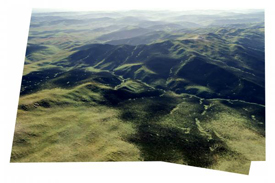 Mark Tribe, 4348–4352, from the Plein Air series, 2014, UV print on Dibond, 55 x 84 in. (artwork © Mark Tribe)
Mark Tribe, 4348–4352, from the Plein Air series, 2014, UV print on Dibond, 55 x 84 in. (artwork © Mark Tribe)
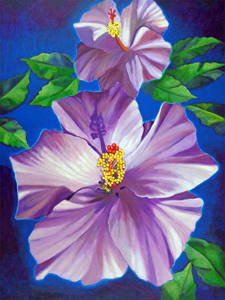 Kyra Belán, Isis and Nephthys, from the American Beuaty series (artwork © Kyra Belán)
Kyra Belán, Isis and Nephthys, from the American Beuaty series (artwork © Kyra Belán)
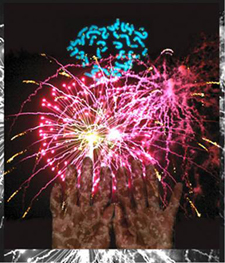 Deborah Cornell, Outbreak: Vector, 2013, archival digital print, 52 x 44 in. (artwork © Deborah Cornell)
Deborah Cornell, Outbreak: Vector, 2013, archival digital print, 52 x 44 in. (artwork © Deborah Cornell)

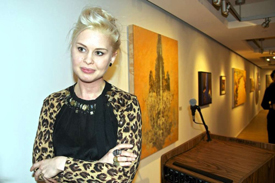 Allison Leigh
Allison Leigh
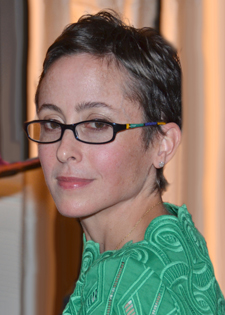 Jill Deupi
Jill Deupi
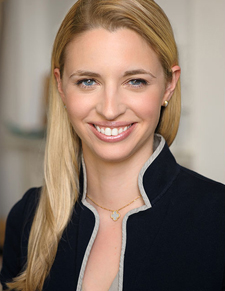 Vanja Malloy
Vanja Malloy
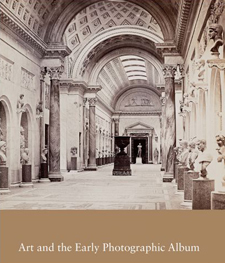

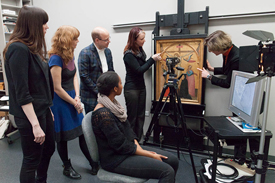 Gathered in the Art Institute of Chicago’s Conservation Examination Room, art-history graduate students Hannah Klemm from the University of Chicago, Ashley Dunn and Grace Deveney (seated) from Northwestern University, and Max Koss (University of Chicago), watch closely as the Art Institute’s assistant paintings conservator Kelly Keegan and Andrew W. Mellon Senior Conservation Scientist Francesca Casadio reveal fascinating learnings from Francescuccio Ghissi’s The Crucifixion (ca. 1370)
Gathered in the Art Institute of Chicago’s Conservation Examination Room, art-history graduate students Hannah Klemm from the University of Chicago, Ashley Dunn and Grace Deveney (seated) from Northwestern University, and Max Koss (University of Chicago), watch closely as the Art Institute’s assistant paintings conservator Kelly Keegan and Andrew W. Mellon Senior Conservation Scientist Francesca Casadio reveal fascinating learnings from Francescuccio Ghissi’s The Crucifixion (ca. 1370)
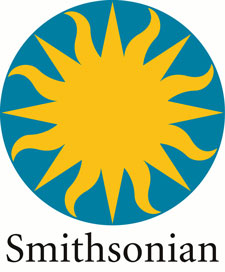

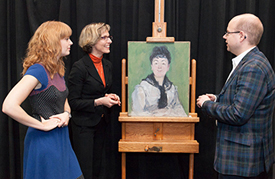 Ashley Dunn, Francesca Casadio, and Max Koss discuss Edouard Manet’s Portrait of a Woman with a Black Fichu (ca. 1878)
Ashley Dunn, Francesca Casadio, and Max Koss discuss Edouard Manet’s Portrait of a Woman with a Black Fichu (ca. 1878)
